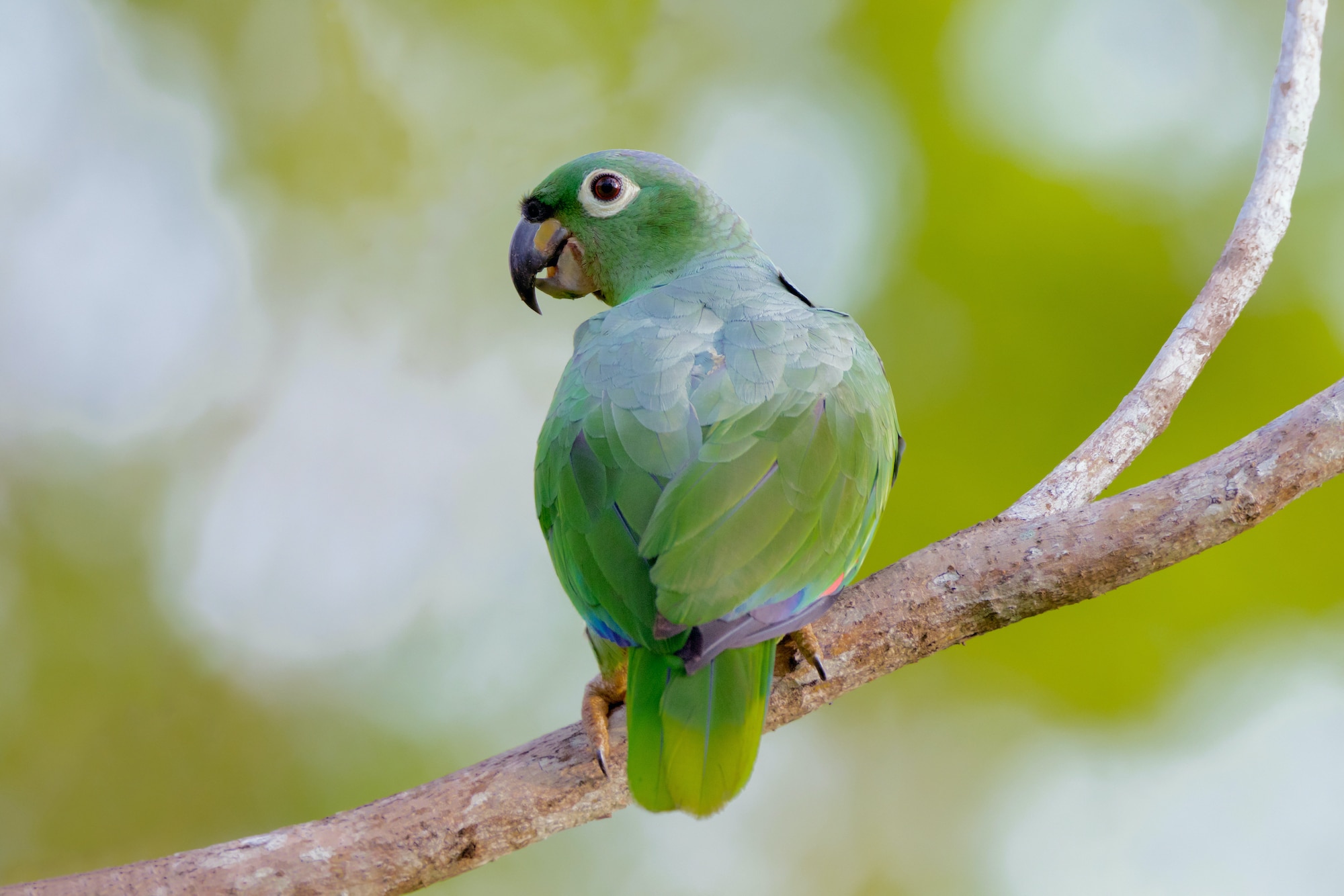Mealy Parrot
Amazona farinosa
What’s “mealy” about the Mealy Parrot? The species was so named because the grayish suffusion to the bird’s nape and upper back was said by early naturalists to look like a dusting of flour, or “meal” (a resemblance also reflected in the species name farinosa, Latin for “sprinkled with flour”). The Mealy Parrot is the largest Amazona parrot in Panama, and indeed the largest parrot in Panama but for the macaws. Like other Amazona parrots—in Panama, the Red-lored and Yellow-crowned Parrots—it is mostly green with red wing patches and yellow tail tips, but it can be distinguished from its congeners by its bolder white eyering, the lack of red or yellow on its forehead or crown, and its black nostril bristles.
Mealy Parrots feed mostly on a wide range of seeds and fruits, as well as buds and flowers. Depending on the time of year and the presence of seeding or fruiting trees, pairs or small groups of Mealy Parrots are a regular sight from the observation deck at the Canopy Tower; the individual pictured above is perched in a fruiting Cecropia tree right next to the Tower. The Mealy Parrot is also very common around the Canopy Camp, in the rainforests of Darién. Behaviorally it is similar to the Red-lored Parrot: both species fly with stiff, shallow wingbeats, produce loud, raucous vocalizations, forage mostly in the canopy, and nest in tree cavities.
However, whereas the Red-lored Parrot can survive in partially deforested areas, and the Yellow-crowned Parrot inhabits open areas including city parks, the Mealy Parrot is typically found only in extensive tracts of dense lowland forest. Due in part to its preference for intact forest habitat, the Mealy Parrot is considered to be Near Threatened, as it faces pressure from deforestation, hunting, and the cage trade in parts of its range.
The Mealy Parrot has been split by some authorities into two different species, the Northern Mealy Parrot (Amazona guatemalae) and the Southern Mealy Parrot (still Amazona farinosa). The Northern Mealy Parrot occurs from southern Mexico south into western Panama (Chiriquí and Bocas del Toro), and differs from its southern counterpart in subtle details of plumage and bill coloration, as well as genetically. Under this taxonomic arrangement it is the Southern Mealy Parrot that we see on Canopy Family tours, at and around the Tower and the Camp. The Southern Mealy Parrot occurs through the rest of Panama and widely in northern South America including in the Amazon basin.

Photo by Rafael Lau
References
Angehr, G. R., and R. Dean (2010). The Birds of Panama: A Field Guide. Zona Tropical, San José, Costa Rica.
Collar, N., J. del Hoyo, A. Bonan, G. M. Kirwan, and P. F. D. Boesman (2020). Mealy Parrot (Amazona farinosa), version 1.0. In Birds of the World (S. M. Billerman, B. K. Keeney, P. G. Rodewald, and T. S. Schulenberg, Editors). Cornell Lab of Ornithology, Ithaca, NY, USA. https://doi.org/10.2173/bow.meapar.01
Jobling, J. A. (2010). Helm Dictionary of Scientific Bird Names: From aalge to zusii. Christopher Helm, London, UK.

